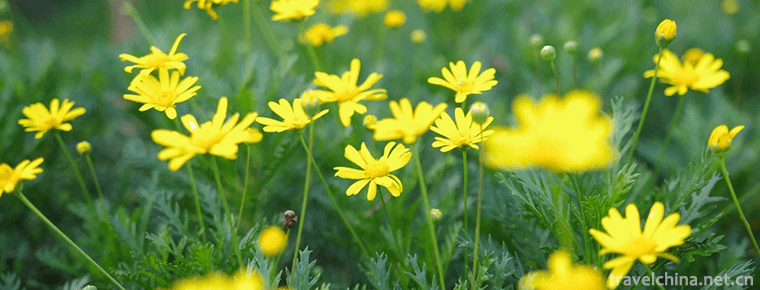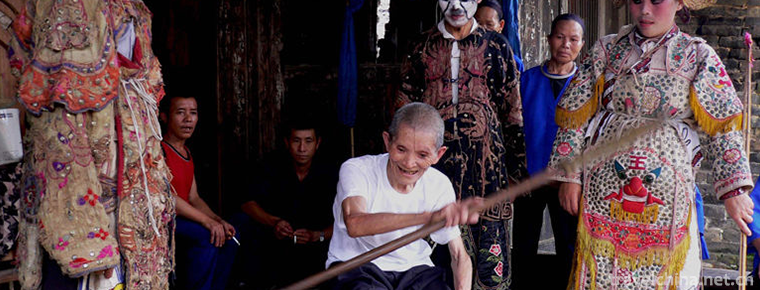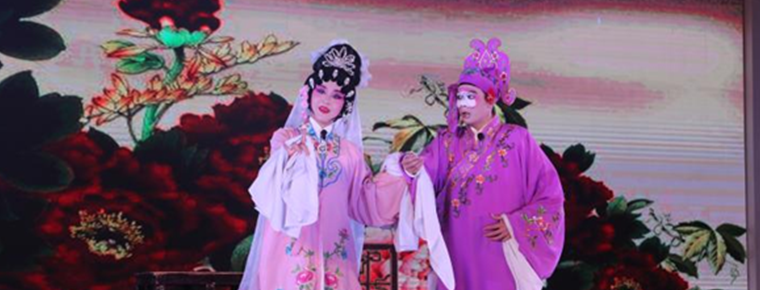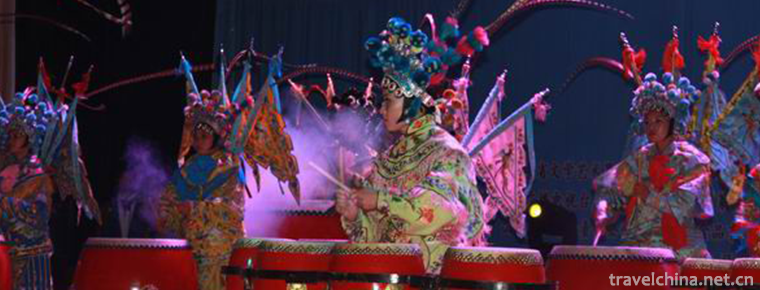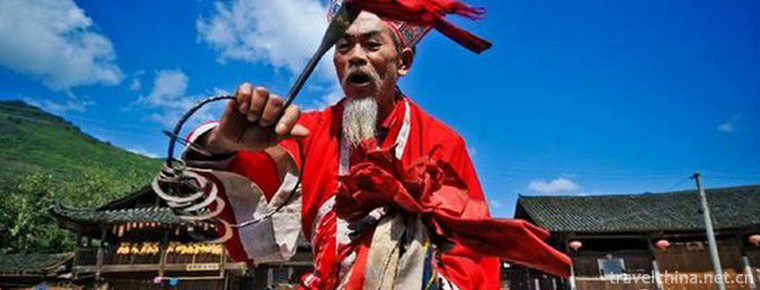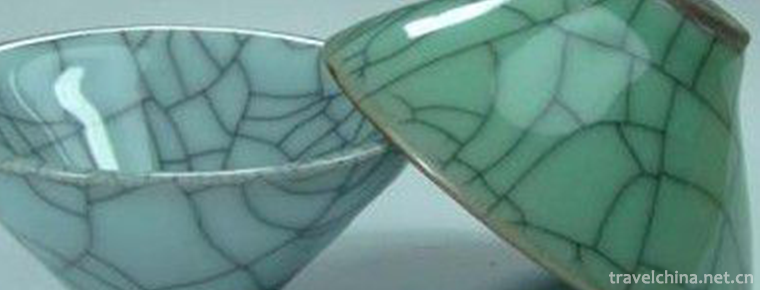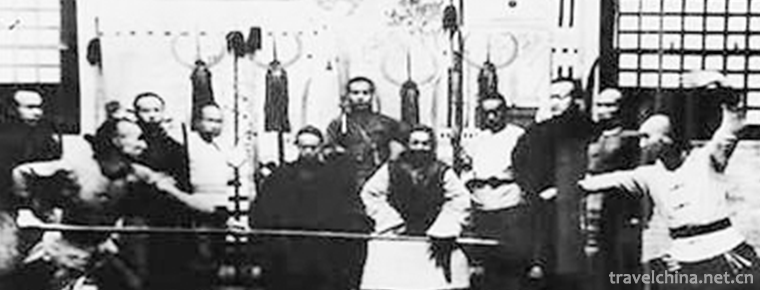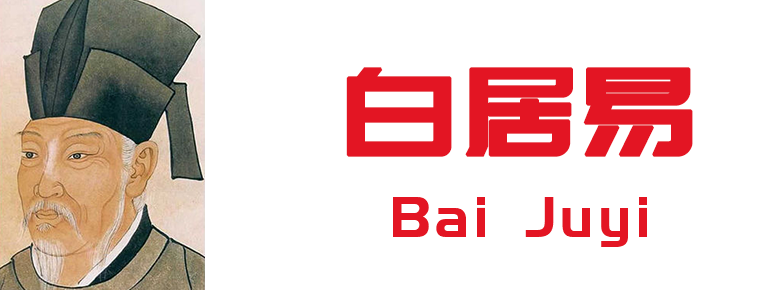Yellow River First Beach
Combining the topography and landscape of the upper reaches of the Yellow River, the Tibetan people have adopted more distinctive names for the upper reaches of the Yellow River, such as Kariqu, Yogurzong Liqu, Zaqu, Xingsuhai, Maqu, Anzhi, Hequ, Jiuqu and Fengliu rivers. Tibetan calls "river" as "qu". As the saying goes, "Eighteen Bays of Nine Curves of the Yellow River under heaven", this "jiuqu" refers to the place where the first Qu of the Yellow River is located in the upper reaches of the Guide River in the Tang Dynasty, or the only county in the whole Yellow River basin named after "the Yellow River" (Note: Maqu, Tibetan is the Yellow River).
Ninety-nine bays of the Yellow River under heaven, the most beautiful natural scenery is the First Bay and Hukou Waterfall, the first bend of the Yellow River, which is 9 kilometers away from Tangkexi. In order to develop tourism, the roads around Tangke, such as S209 and XU13, have been widened since 2014 and have not been repaired yet.
Here you can see the intersection and turning of the Yellow River and its tributary Baihe River, which is very spectacular. It has the nickname of "West Lake outside the Saiwai". At the 2008 China Yellow River Tourism Conference, the first bend of the Jiuqu Yellow River was named "50 Sceneries of the Yellow River in China".
Historical culture
Chinese Yellow River
Jiuqu Yellow River is the mother river of the Chinese nation. The torrential Yellow River has nurtured hundreds of millions of Chinese children. The ever-flowing river carries the infinite hope and longing for the future of this ancient nation. Thousands of years, thousands of years, billows and billows of the Yellow River children's fervent love, rolling yellow sand floating with endless songs of the loess, Jiuqu River beach can not be filled with the brilliant life of the Chinese nation!
Ninety-nine bays of the Yellow River are under heaven. The most beautiful natural scenery is the First Bay and Hukou Waterfall. These two landscapes are known as the magical three-dimensional maps of the Jiuqu Yellow River. They are S-shaped Bay roads formed when the Yellow River flows through these two landscapes. They are praised for their similarity to the Yin-Yang Taiji map in Zhouyi on the map. It is similar to the theory of "life cycle" or "sun-moon cycle" of Tibetan native religion ("Mao") and Tibetan Buddhism ("Mao").
As the saying goes: Before reaching the Yellow River, Chinese and foreign tourists come to enjoy the scenery of the first bay of the Yellow River, especially the scenery of sunset and sunrise. In the evening, when the sunset sets to the west, the Yellow River glitters with red light in the sunset, winding freely and extensively. Only the first bay of the Nine-Curve Yellow River can possess that magnificent spirit and calm demeanor.
Hukou Waterfall of the Yellow River is touching
Hukou Waterfall of the Yellow River, known as the world's first yellow waterfall, attracts countless tourists at home and abroad with its grand momentum of "pouring into thousands of islands to empty the air and making a thunderstorm". It can be said that "from Kunlun Yandaliu, Yuguan nine turn a pot harvest". Hukou Waterfall is located in the Qinjin Gorge in the middle reaches of the Yellow River. Hexi belongs to Hukou Township, Yichuan County, Shaanxi Province. Hedong is connected with Jixian County, Shanxi Province. It is the largest waterfall in the Yellow River and the second largest waterfall in China after Huangguoshu Waterfall in Guizhou Province. It is known as "Golden Waterfall". The song "The Boatman's Song of the Yellow River", which has been sung for thousands of years, sings the magnificence of the Yellow River and the earth-shaking and soul-shaking momentum of the Hukou of the Yellow River.
The huge current of the Yellow River rushes all the way, and flows southward at the junction of Shanxi and Shaanxi. It flows to Jixian County of Shanxi and Yichuan of Shaanxi Province. It is held hostage by Cangshan Mountain on both sides of the Taiwan Straits and is confined to narrow stone valleys on both sides of Hukou. Rushing the Yellow River, it suddenly ended more than 50 meters by more than 300 meters wide. At this time, the river rushed and roared, and the mountain sounded like a huge pot boiling, and finally fell into a deep trough, forming a 50-meter drop in the pot mouth waterfall. It is named for its shape like the mouth of a pot. Hukou Waterfall is a national scenic spot with spectacular momentum and peculiar natural landscape. The 50-yuan-denominated picture of Hukou Waterfall on the Yellow River is a magnificent spectacle. The width and height of Hukou Waterfall are not very large. It is surprising that the flow rate of Hukou Waterfall is considerable. In the dry season of winter, the flow rate in seconds is only 150 to 300 cubic meters, when the river is icebound and trickles down, giving people a sense of beauty; in early April, once the glacier thaws, the flow rate in seconds increases sharply to more than 1000 cubic meters, and the maximum is 8000 cubic meters. At this time, the huge flow is impacted by a large number of ice blocks, such as lions roaring tigers, earthquakes and earthquakes; in summer, the flow rate in seconds increases to 1000 to 2000 cubic meters. In the meantime, as the water level in the lower reaches drops, the drop increases and the huge waterfall falls down, the water column that is aroused shoots straight into the sky like an arrow. In an instant, a water column turns into tiny droplets, thus forming a misty white fog, occasionally showing a seven-color rainbow. In the golden autumn rainy season, the water of thousands of streams converges and the flow of rivers increases sharply to more than 3,000 cubic meters, and all waterfalls are connected. When the flood waves roar, the turbulence is surging, the sound is like thunder, the scene is very spectacular. Four kilometers away from Hukou Falls, the roar of the Yellow River like a tiger and a wolf has been heard. As we look closer, "Listen to the thunder, look like the rainbow," rolling yellow to the mouth of the pot, quickly closed, into the deep pool, aroused hundreds of feet of water column, clouds and mists cover the river bank.
"In and out, there are clouds and smoke." The plume of white smoke rising from the water is one of the wonders of Hukou Waterfall. Only see, the Yellow River water poured in the drop of about 30 meters in the stone trough, the shape of a teapot water, jet wall, surging waves beat the shore, standing on the Yellow River tourists can not help but tremble. Hukou Waterfall presents different scenery with seasonal changes. In spring, ice thaws and ice falls, like landslides and cracks, like shelling and thunder. In summer and autumn, there are a lot of rainwater, heavy floods, turbid waves emptying, waterfalls up to 100 meters wide, tens of miles around the sky covered by water and air, and the atmosphere is very hot. In winter, ice is frozen and snow is frozen. Waterfalls are covered with ice. Silver is wrapped in plain clothes, which is particularly enchanting. Overlooking the river water into the pot, suspension spray wall, drum like mountains, misty rain. Looking up, the Yellow River is rolling in the horizon, like thousands of mountains flying down, all over the world surging. No wonder "Shixian" Li Taibai exclaimed, "You can't see the water of the Yellow River rising from the sky, running to the sea and never returning." Standing on a huge stone near a waterfall covered by mist and water, listening to the roaring waves, watching the cloudy waves empty, there is often a feeling of suffocation and dizziness; feeling the wind covering your face with water, making your body wet, but also comfortable and romantic; if you have luck, the weather is fine, eight out of ten wines will have a rainbow, or long red water, or across the Qin and Jin Dynasties, if hidden, like a dream, for a while. It's like being in a fairyland. The past of the world, clean up empty, the mind as transparent as jadeite, even if there are thousands of unsatisfactory things, can be put into turbulence. Looking at the water of the Yellow River, people seem to see that the Yellow River Chorus inspired countless Chinese sons and daughters to go forward bravely. Today, standing beside the rolling Yellow River to listen to the roaring of the Yellow River, many tourists'faces are difficult to suppress their agile expressions. Although there is only one river between Shaanxi Province and Shanxi Province, the waterfalls seen in Shanxi Province have enlarged their ornamental scope, but their magnificent momentum is slightly inferior. The vision of ten thousand horses makes our hearts bright and clear. At that moment, our troubles and unhappiness have been thrown out of the sky.
Yijin Village near Hukou is said to be the place where Dayu married and married. Dayu's water control began with dredging the pot mouth, splitting the Meng Gate and chiseling the Longmen Gate, leaving behind the story of "three passes through the door but not into it". So far, there are many traces here.
Passion of Jiuqu Yellow River
In the natural and cultural corridor of the Jiuqu Yellow River, you can see the Yangshao culture of the Yellow River, the Majiayao culture, the Haxiu culture in the upper reaches of the Dadu River, the Yingpanshan culture in the upper reaches of the Minjiang River, the Shawudu culture, the Baodun culture, the Sanxingdui culture and the Jinsha culture, as well as the outline and vein of the nomadic culture, hunting culture and farming from the Qinghai-Tibet Plateau to the Loess Plateau. Culture and primitive religious culture-Benjian culture-Taoist culture-Tibetan Buddhist culture-Han Buddhist culture and Tibetan culture-Qiang culture-Hui culture-the historical track of the development of Han culture... Being in it is like walking into the life of the ancestors of the Chinese nation. There is a special experience of traversing the tunnel of time and space. Since the rivers are expanding from the downstream to the upstream, it may not be that the Yellow River looks downward for a way out to form the first bay of the Nine-meander Yellow River in Tangke, but that the Yellow River cuts through the Longyangxia Gorge upwards, leading to the reverse flow of the west water from Zoige to the Yellow River. The Yellow River brings abundant water from glaciers and lakes on the Qinghai-Tibet Plateau into its embrace and becomes a long river from the roof of the world to the vast ocean. Is the "Westward Rising and Eastern Spreading" of Chinese Civilization the result of the miraculous three-dimensional map traction and cultural context of the Jiuqu Yellow River? Practice has proved that all civilizations in the world often originate from the source of rivers, but their development and growth are in the middle and lower reaches of rivers.
geographical environment
South China Sea Tourism Development Zone
Jiuqu Yellow River belongs to Nanhai Tourism Development Zone of Baotou City. It is located in Donghe District of Baotou City. After the diversion of river water southward, it forms water surface and beach grassland. The total area of this development zone is 2000 hectares, including 480 hectares of water surface, which is divided into water activity area and lakeside tourism area.
South China Sea Development Zone
The South China Sea Development Zone of Jiuqu Yellow River was built in 1985. It is surrounded by green hills in the north, Yellow River jade belt in the south, green waves in the lake, abundant water and grass along the lakeside, Flying Gulls and birds in the sky, unique scenery, natural beauty and artificial beauty, which make it not only have the characteristics of thick and rough outside, but also have the charming spirit of Jiangnan water village. It enjoys the nickname of "West Lake outside the Saiwai". It is one of the unique tourist scenic spots of Grassland Steel City.
Main attractions
Yellow River First Beach
As the most representative scenic spot of the Yellow River prairie, the First Bay of Jiuqu Yellow River expresses the feminine beauty of the spirit of the Yellow River "tranquil and far-reaching" with a magnanimous attitude and peaceful mentality, while the Hukou Waterfall of the Yellow River expresses the masculine Taiji spirit of the spirit of the Yellow River "spiritual flying" with an atmospheric attitude and heroic mentality. The two unique landscapes of "one movement, one quiet, one Yin and one yang" can be regarded as the best interpretation of the spirit of the Yellow River. They are the three-dimensional reappearance of Chinese Yin and Yang Taiji doctrine, the typical "materialized" and "humanized" resources. They are deeply imprinted with the spirit of the Yellow River. They have obvious historical accumulation, spirit of the times and national culture. They can be regarded as the emotional identification of the global Chinese people to the Mother River of the Yellow River. Where it is. If we can play the "Yellow River Spirit" card well and see both the scenery and the context of the Yellow River, visitors can truly feel the essence of the Yellow River Spirit in the tour and further stimulate patriotic enthusiasm. "Ten thousand trickles turn into a great river and turn back to the dangerous beach one thousand times." The first bay of the Yellow River is full of people. The mother river, the Yellow River, originated from the Bayan Kara Mountains in Qinghai Province and twists and turns from west to east. It joined Tangke Township in Zoige County of Sichuan Province with the Baihe River, forming the first turning Bay of the magnificent Jiuqu Yellow River, across the river from Gansu Province. She is the only section of the Yellow River in Sichuan. Looking up from a high altitude, we can see the rivers of yellow and white competing with each other, with graceful style and money coming, winding away, like Hada, like jade belt, like a long dragon, like flying ribbon and Hada, floating from the end of the sky.
Jiuqu Yellow River First Bay Island
"The Yellow River rises in the sky and falls in the red sun." There are many islands in the First Bay of the Jiuqu Yellow River, including willow trees, water birds and fishing boats, forming a beautiful scene of "falling clouds and arcing ducks flying together, and autumn water growing in the sky". It is called "the solemn illusion of the universe" by Chinese and foreign scientists. White pagoda, cluster tents, smoke, sound pastoral songs, cattle and sheep dot, accompanied by the Yellow River, accompanied by the vast grassland, showing the natural and cultural heritage of the long and broad mind. It is here that the earliest version and evolutionary basis of the heroic epic rap of Ridge Gesar are deduced, and various anecdotes of Gesar's heroic deeds are circulated.
Yellow River Steppe Wetland
In the vast grassland wetland of the Yellow River, Black-necked Cranes use their songs and dances to deduce the dignity of immortals and the spirit of life. The three famous horses, Hequ Horse, often ride freely on the Yellow River prairie. Hequ Horse is praised by Du Fu as "Bamboo with beautiful ears and light wind like four feet". The Yellow River prairie is very vast. It brings the word "wide" into full play. When people come here, their mind is naturally open and their mood is bright. In summer, when the grassland is the most beautiful, you might as well throw yourself into this wonderful place and become a passionate tourist.
You can also join the pastoral songs of the herdsmen, and temporarily integrate into the prairie, enjoy the magnificent atmosphere and the general idea of the three-dimensional map of the Yellow River. When you stand in the Jorge Marsh and look at the quiet and peaceful Jiuqu First Bay of the Yellow River, its character of "the Yellow River decides Kunlun in the West and roars thousands of miles to touch the Dragon Gate" is still hidden, which seems to match the vast grassland here, but you can still feel a power in the blood. The song "King Gesar's Rap" which has been handed down for thousands of years, sings the vastness of the Yellow River prairie, and the broad mind of the first bay of the Yellow River, which is breathless, peaceful and far-reaching.
Practical information
Ticket information
Ticket: 100.00 yuan; Opening time: 08:30-18:00; Suggested play: 5 hours
Matters needing attention
1. Sometimes there will be snow and rain. The temperature difference between morning and evening in the grassland is large. It is better for tourists to take relevant raingear and coats, thin sweaters, sunglasses, sunscreen and pay attention to the warm work. Attention should be paid to sunscreen in scenic spots with an altitude of 1500-2300 meters, and the customs and habits of ethnic minority areas should be respected. There are many uncertainties when shooting on the grassland. Sometimes in the open grassland, large herds of cattle and sheep will suddenly come. We must pay attention to safety. Herdsmen's tents are likely to be met at any time on the grassland, and Tibetan herdsmen are very hospitable and cooperate with photographs, but when approaching the tent, they should first ask the herdsmen to tie the ferocious shepherd dogs in order to avoid danger.
2. The temperature difference between day and night in Jorge is large: 1-3 degrees Celsius in the daytime, more than 10 degrees below zero in the night, and especially humid. When camping, you should put your shoes under the bedclothes. Otherwise, when you get up the next day, your shoes will be covered with ice (there are hotels in Jorge County, but there are no air conditioning and heating); it is necessary to bring enough cold-proof equipment. 3. There will be Alpine reaction (hypoxia) in about 3 hours of crossing Parrot Hill. It is better to prepare a portable oxygen cylinder (some medical equipment stores are available, one is enough for one person) for emergency use. 4. Because of the great difference in climate, it is most likely to catch cold and discomfort, and Tibetan food is mostly raw and cold. Therefore, we should take cold medicine, antifeedant and Hongjingtian buccal tablets, and chewing gum can also help alleviate mountain reaction. 5. High altitude sunshine is very strong, easy to burn the skin, ladies had better wear sunshade caps, umbrellas and sunscreen.
Traffic information
1. Chengdu-Dujiangyan high-speed, good road conditions, driving time of about one hour.
2. The Dujiangyan-Yingxiu section is under construction because of the hydropower station along the Minjiang River. The road condition is not good and the dust is very big, and traffic jams are encountered from time to time. A much higher new national road has been opened up along the mountain walls along the river - 213 we are going through will be submerged under the clean water of the hydropower station in the future.
3. Crossing Miero to the tunnel at the foot of Parrot Mountain, traffic jams are easily encountered due to construction. Over 4457 meters above sea level.
4. Over the 4300 m Parrot Hill, the road on the hill is dirt road, winding road, no rain and dust, which has a great impact on Self-driving to Aba Prefecture. It is recommended not to drive to Aba Prefecture this year. The driving time is about three hours.
5. The whole journey from Shuma Temple to Kang Ke is asphalt, and the road condition is good.
6. Kang Ke entered the original asphalt road at the first bend of the Nine Bends of the Yellow River.
7. The whole journey from Ruoergai County to Huahu and Langmusi is more than 90 kilometers. The whole journey is dirt road. The road condition is poor, the dust is big and the chassis is bumpy. The car with lower chassis is advised not to go there. The driving time from Zoige County to Huahu Lake is about 3 hours, and from Zoige County to Langmu Temple is about 5 hours. Accommodation: There are hotels in Jiuqu First Bay Scenic Area and Watcher of the Yellow River. Visitors can also choose to stay in Tangke Township 8 kilometers away from the Scenic Area.
geographical position
Located 9 kilometers west of Tangke Township, Zoige County.














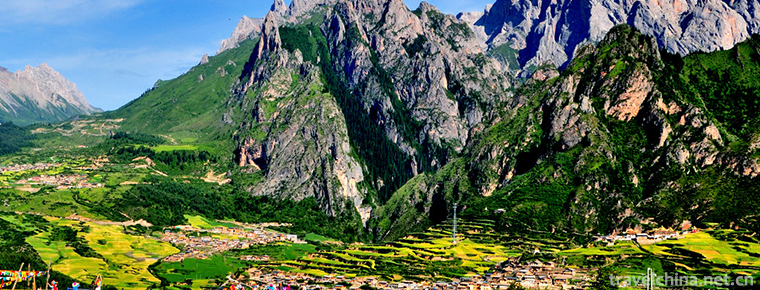
-
Pineapple Sweet and Sour Pork
Gu Lu meat, also known as the ancient meat. It is a special dish in Guangdong. This dish dates back to the Qing Dynasty. At that time, many foreigners in the city of Guangzhou .
Views: 147 Time 2018-11-02 -
Shanghai Gulf National Forest Park
Shanghai Bay National Forest Park is located in the May 4th Farm of Haiwan Town, Fengxian District, Shanghai, 60 kilometers from the center of Shanghai. It is a large artificial urban ecological fores.
Views: 144 Time 2018-12-19 -
Korean Crane Dance
Crane Dance of the Korean Nationality has a long history and is a unique dance performance form of the Korean Nationality in China. It has the national characteristics and the value of artistic resear.
Views: 193 Time 2019-04-16 -
Dong Opera
Dong Opera, one of the national intangible cultural heritage, is a local traditional drama in Liping County, Guizhou Province, Tongtong Dong Autonomous County, Hunan Province and Sanjiang Dong Autonom.
Views: 208 Time 2019-04-27 -
Hua Chao Opera
Huachao Opera, a local traditional drama in Zijin County, Guangdong Province, is one of the national intangible cultural heritage..
Views: 117 Time 2019-05-04 -
Liaoning wind and percussion ensemble
Liaoning drum music, commonly known as drum music. It is one of the traditional folk instrumental music in China. Liaoning drum music is divided into Suona music and Sheng wind music, and according to.
Views: 283 Time 2019-05-13 -
Timago of Tujia Nationality
The Tujia Tima song, also known as the "Tujia Tima Goddess Song", is an ancient song sung in Tujia language in the activities of Tujia Tima. It mainly distributes in Longshan, Yongshun, Baoj.
Views: 278 Time 2019-06-23 -
Firing Techniques of Wuzhou Kiln Ceramics
The traditional firing technique of Wuzhou kiln is a local traditional handicraft technique in Zhejiang Province. Wuzhou kiln is located in Tiedian Village, Langya Township, Jinhua City. Jinhua was na.
Views: 116 Time 2019-06-30 -
Xingyiquan
Xingyiquan, also known as Xingyiquan, is one of the traditional Chinese boxing. Although there are different opinions on its origin, Ji Jike (1602-1680), a native of Puzhou, Shanxi Province, was widel.
Views: 129 Time 2019-07-08 -
Bai Juyi
Bai Juyi (772 - to - 6), Le Tian, the number of Xiangshan residence, and Mr. drunken Yin, whose ancestral home is Taiyuan, Shanxi. And moved to his great grandfather. Lower jaw Born in Henan Xinzheng .
Views: 249 Time 2019-09-06 -
Nanchong cultural undertakings
By the end of 2019, Nanchong has 10 cultural centers, 242 cultural stations and 10 public libraries. There are 8 museums, 28 cultural relics protection and management institutions, 18 national key cultural relics protection units, 112 provincial-level cultural relics protection units.
Views: 296 Time 2020-12-17 -
Population of Yibin
By the end of 2019, the total registered residence of Yibin was 5 million 515 thousand, 8 thousand less than the end of last year, and the registered residence population urbanization rate was 37.87%, which was 2.28 percentage points higher than that .
Views: 147 Time 2020-12-18

